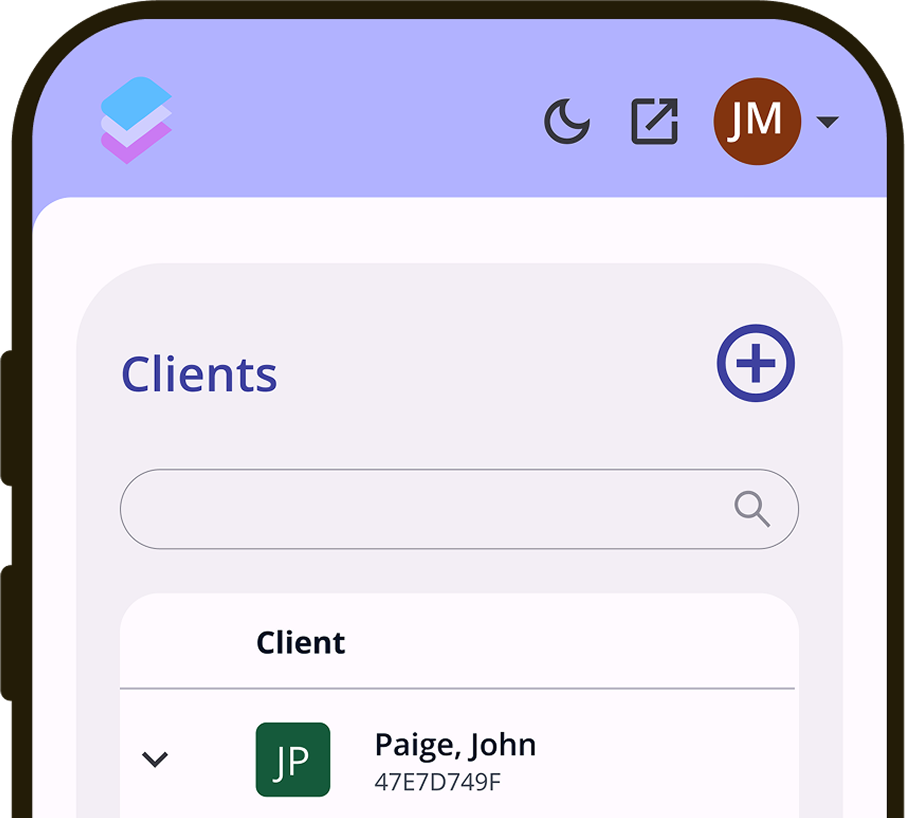From Outreach to Intake: Creating an End-to-End Solution for Coordinated Entry

Continuum of Care (CoC) providers face multiple challenges when it comes to addressing homelessness, but there’s one overarching: They don’t have enough housing or sufficient resources to immediately serve individuals as soon as they experience homelessness.
The goal, then, is to establish a system to best allocate those limited resources. Coordinated entry helps in this regard. It is the process of providing homeless individuals appropriate services regardless of which system of care they first come into contact with. It’s a way for providers to communicate across programs and build a collective system to address homelessness.
Modern data solutions have dramatically improved this. What used to be a first-come, first- served system—and program based, at that—has evolved into a person-centric operation. As you build records for individuals, you can refer them to services for immediate needs and create waitlists based on priority. The most vulnerable clients get the care they need as close to first engagement as possible.
When done right, an effective Coordinated Entry System (CES) with clear protocols and a path from outreach to intake will serve as the cornerstone of your collective response to homelessness.
Optimizing Coordinated Entry
The key to implementing an effective coordinated system is to facilitate conversation and understand the steps it takes to transition individuals from vulnerable to stable situations. While organizations describe the phases in different ways, they follow the same basic pattern: outreach, engagement, assessment, prioritization, referral, and program placement.
The goal is to track progress along the way so you can properly assess the clients you have and get them the services they need, when they need them. That’s only possible by optimizing each phase and coordinating with all of your community’s systems of care.
Maximize Outreach
The outreach process challenges providers in different ways. For instance, you may know where your most vulnerable clients are, but you don’t have an efficient way to collect their information or provide guidance on next steps.
Thankfully, what used to be handled with paperwork can now be done on your phone or tablet. The mobile capabilities of modern Homeless Management Information System (HMIS) solutions, such as Clarity Human Services, have streamlined outreach. You can now bring HMIS tools in the field with you and get clients into the CES quickly. In doing so, you establish trust, provide honest expectations, and record data onsite while tracking locations.
By charting location, you can also overlay maps and integrate outside data sources to identify areas of intense needs. You’re no longer guessing at where vulnerable individuals might live but going directly to them. They’re not seeking you out. You’re finding them.
For example, Clarity Human Services enables authorized users to securely track outreach efforts, complete coordinated entry assessments, and—where appropriate—reserve housing and service resources from the field. It’s also location-aware, with the ability to add geographic context to homeless data by using GPS coordinates (e.g., using a mobile device) and automatic geocoding of manually entered addresses. Location information can be combined with other data points to create geographic visualizations using a built-in data analysis tool or third-party reporting tools (Tableau® or ArcGIS®) via Clarity's customer data model.
Facilitate Engagement
We tend to think of engagement as a one-off interaction when, really, it’s the cultivation of a relationship through the coordinated entry process. Building relationships is so important to providing the right services to your clients at the right times, even if it means you move them into the coordinated entry system with only a partial record.
Oftentimes, it's difficult to build a client record while establishing a relationship with a client. Intuitive HMIS data systems such as Clarity Human Services allow the caseworker to track service transactions without a complete client record. This is a game-changer in terms of adequate engagement.
Assess and Prioritize
Homeless services used to be a first-come, first-served process. Any client you could place in housing was one less on the street. However, that philosophy lacked nuance, as some individuals were in more vulnerable situations than others, and if housing or space in a program wasn’t available, they were out of luck. Moreover, if they required different services, they had to move across systems of care rather than remaining in one.
Now, with modern technology, you can use the coordinated entry model to assess clients and assign services and housing based on risk for those most in need of assistance. Clarity Human Services even allows for multiple waitlists to ensure every resource is utilized efficiently.
The results are two-fold. First, you’ll allocate space and resources more efficiently. Second, you’ll provide more honest expectations for clients as soon as they move into the CES.
Measure Performance
Measuring performance isn’t just about producing reports and collecting information. It’s about utilizing visualization tools to detect trends, improve reporting, and better leverage data. That’s when effective, lasting change takes place. Coordinated entry then not only improves the lives of homeless individuals directly, it also informs policy to promote long-term successes.
As you consider all of these phases of coordinated entry, you can refine your processes and improve your efforts as a whole.
Coordinated Entry With Clarity Human Services
While all the above qualify as best practices, you still need a solution to help you execute coordinated entry with your systems in place. Some CoCs rely on multiple platforms to accomplish the different phases—stressing resources, and elongating the process.
There is, however, an HMIS that was designed with coordinated entry built in. Bitfocus’ Clarity Human Services is flexible enough to use with the most common coordinated entry processes, as well as local custom tools and best practices.
The benefits of Clarity include the following:
An End-to-End Coordinated Entry Solution
Integrated support for the entire coordinated entry process, from outreach and engagement, assessment and prioritization to referral, placement, and performance measurement.
- Built-in support for leading assessment tools
- Powerful program eligibility engine
- Real-time graphed resource availability
Maximize Outreach
Clarity Human Services gives providers relevant and direct access to the HMIS tools they need as close as possible to that first client engagement, and brings the client as quickly as possible into the CES.
- Outreach and encampment tool
- Mobile capabilities
- Go paperless with the ability to capture signatures, photographs, and locations in the field
- Geolocation
Facilitate Engagement
Clarity Human Services supports a progressive engagement model. Start with what you have, and develop the relationship and the client record over time.
- Overlay maps integrate outside data sources to set the stage for client engagement, and direct outreach teams to areas of most intense need.
Powerful Assessment (Custom or Industry-Standard)
- Locally configurable prioritization tools
- Automatic eligibility screening
- Secure inter-agency/department communication
- Easy generation of by-name lists
Prioritization
Go beyond the by-name list with housing ladders. Clarity Human Services features multiple waitlists to facilitate complex referrals and transfers within the queue for situations with acuity drops—e.g., someone goes from Permanent Supportive Housing (PSH) to transitional supportive housing.
- Free up resources and preserve funding.
- Create a primary queue for basic coordinated entry.
- Create a secondary queue for those who are enrolled in high-intensity/high-cost services with the ability to step them down in service intensity (to TSH, Section 8, etc.) and free up the PSH units.
Performance Measurement
- Easily detect trends and patterns with drag-drop data visualization tools.
- Measure program, community-wide, and coordinated entry performance.
- Robust reporting
- Customizable assessment and ad-hoc reporting
- 170+ prebuilt U.S. Department of Housing & Urban Development (HUD) reports
- Built-in calculations
Community-Wide Notification System
- Documented real-time interactions with the client record
- System-wide public alerts
- Secure internal system-based messaging
Infinitely Customizable
System administrators can autonomously create custom workflows, data fields, screens/forms, assessments, local prioritization tools, and user account settings.
- User-friendly field designer and screen editor
- Custom assessments and score processors
- Powerful BI tools for custom dashboards and reports
- Pre-built project templates that include screens containing the HUD universal coordinated entry systems (CES) data elements
- Ability to integrate data across systems of care
- Assessments dedicated to current living situation
- Coordinated entry-specific screens that include data fields that track assessment location and contact type
- Pre-built services designed to track coordinated entry event categories
- Inferred values to eliminate the need for duplicate data entry
Your community will simply need to determine its coordinated entry workflow, then Clarity Human Services can do the rest. Its user-friendly model and seemingly endless customization possibilities speaks to Bitfocus’ expertise in the industry.
As HMIS system administrators, Bitfocus is an active member of the HUD HMIS System Administrator calls. The company’s boots-on-the-ground knowledge ensures that Clarity Human Services is fully adaptable to all HUD-recommended coordinated entry configurations, while remaining in compliance with coordinated entry data standards.
When you use Clarity Human Services, you get more than the industry-leading HMIS—you enlist a team of data and public policy experts. Bitfocus knows what it takes to create effective coordinated entry systems and empower high-performing data-driven communities all across the nation.
